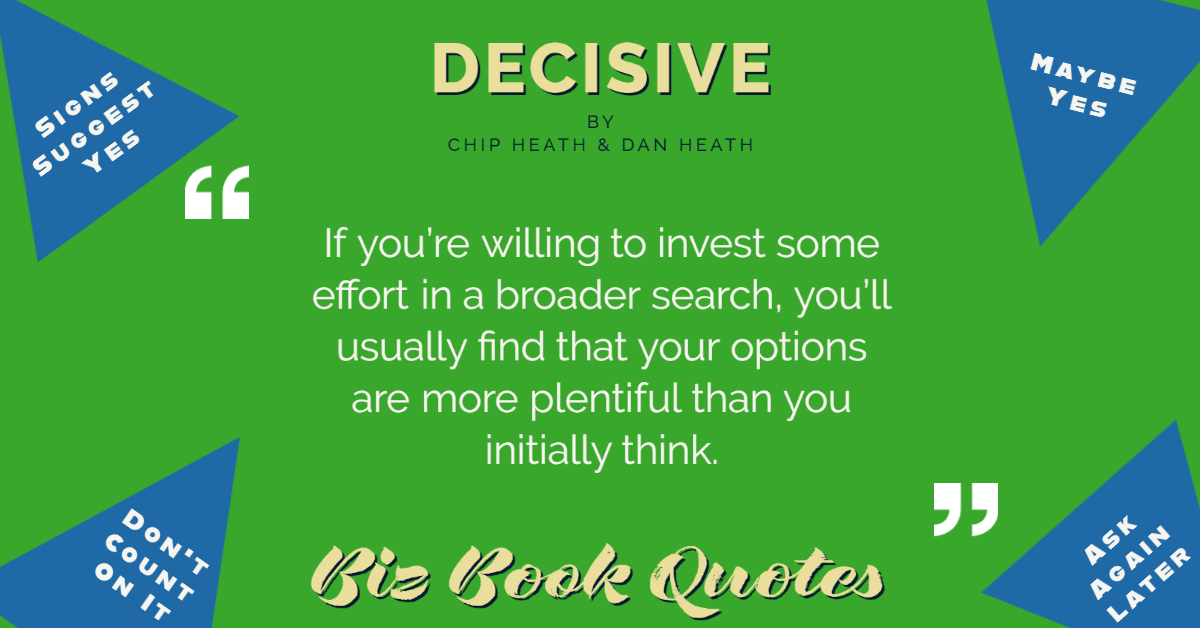 |
If you’re willing to invest some effort in a broader search, you’ll usually find that your options are more plentiful than you initially think.
|
38 |
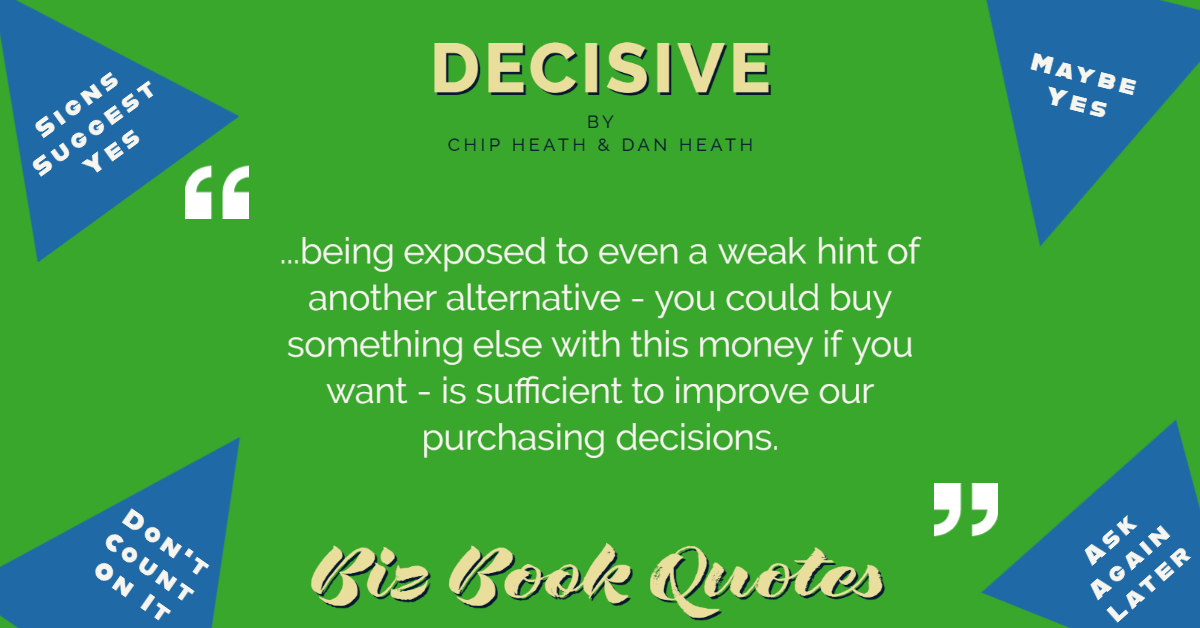 |
…being exposed to even a weak hint of another alternative – you could buy something else with this money if you want – is sufficient to improve our purchasing decisions.
|
44 |
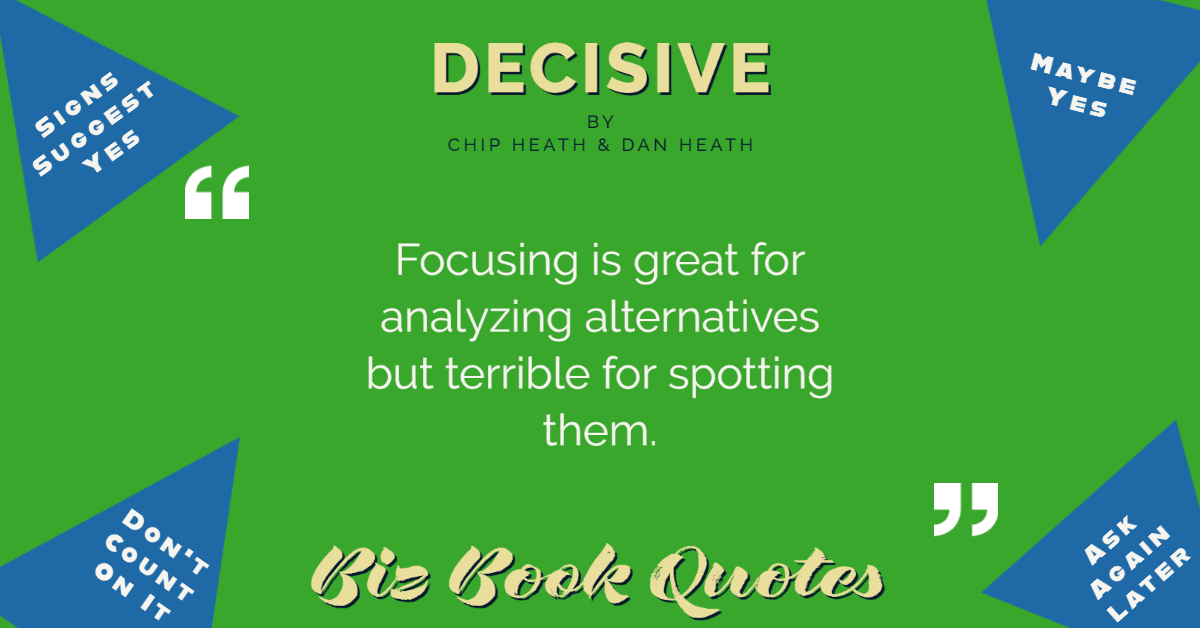 |
Focusing is great for analyzing alternatives but terrible for spotting them.
|
44 |
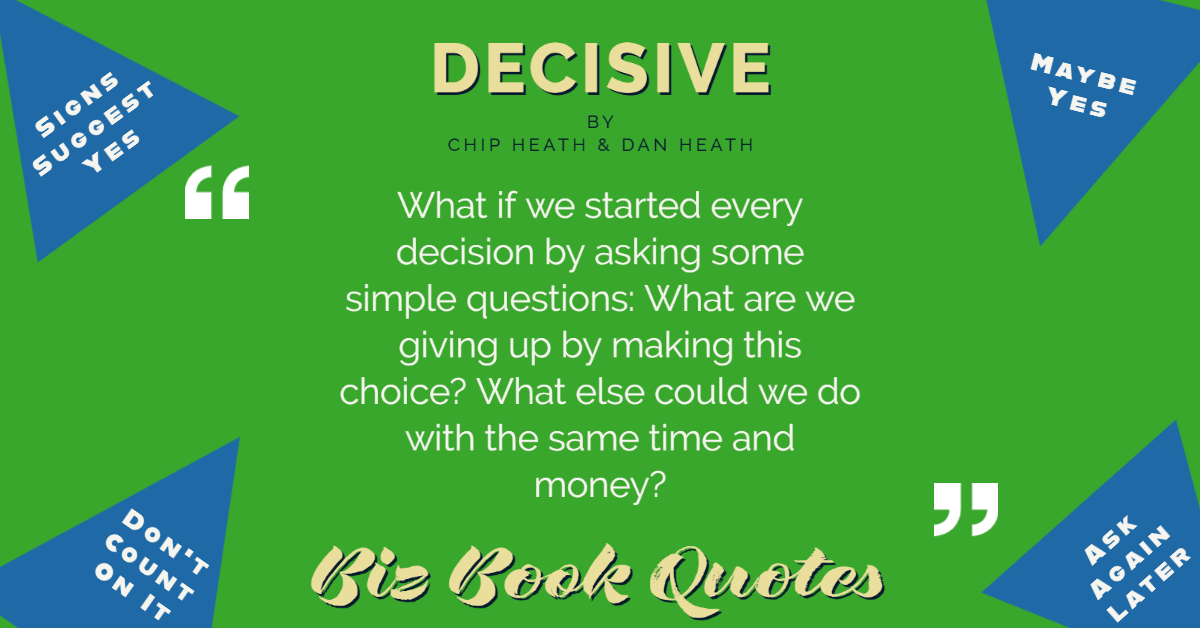 |
What if we started every decision by asking some simple questions: What are we giving up by making this choice? What else could we do with the same time and money?
|
45 |
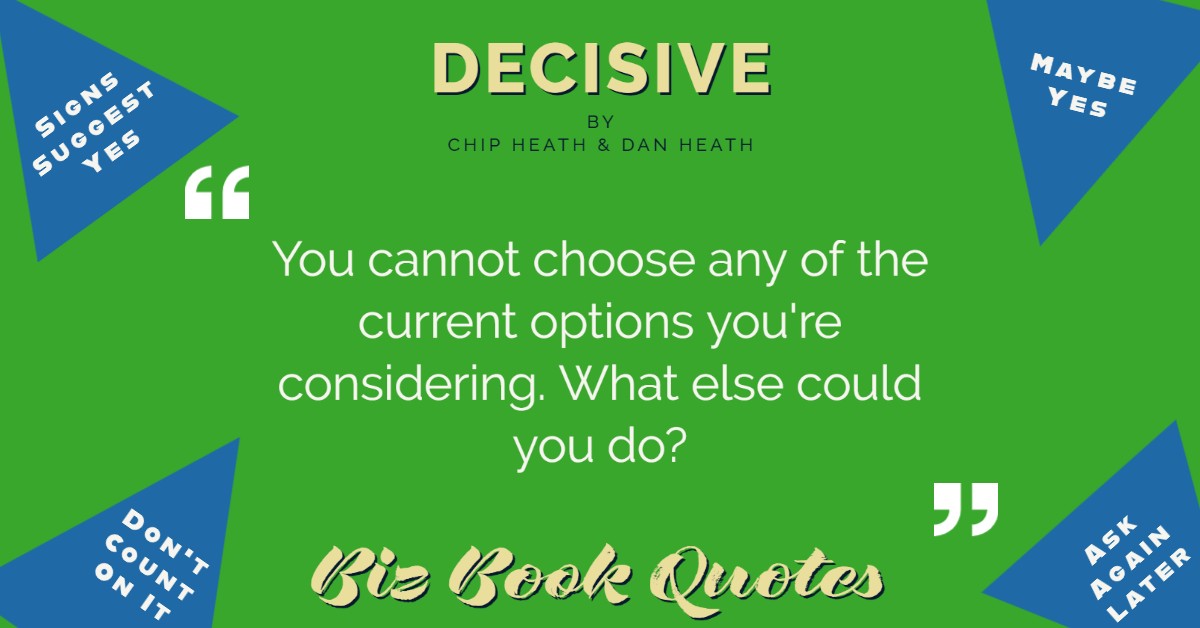 |
You cannot choose any of the current options you’re considering. What else could you do?
|
46 |
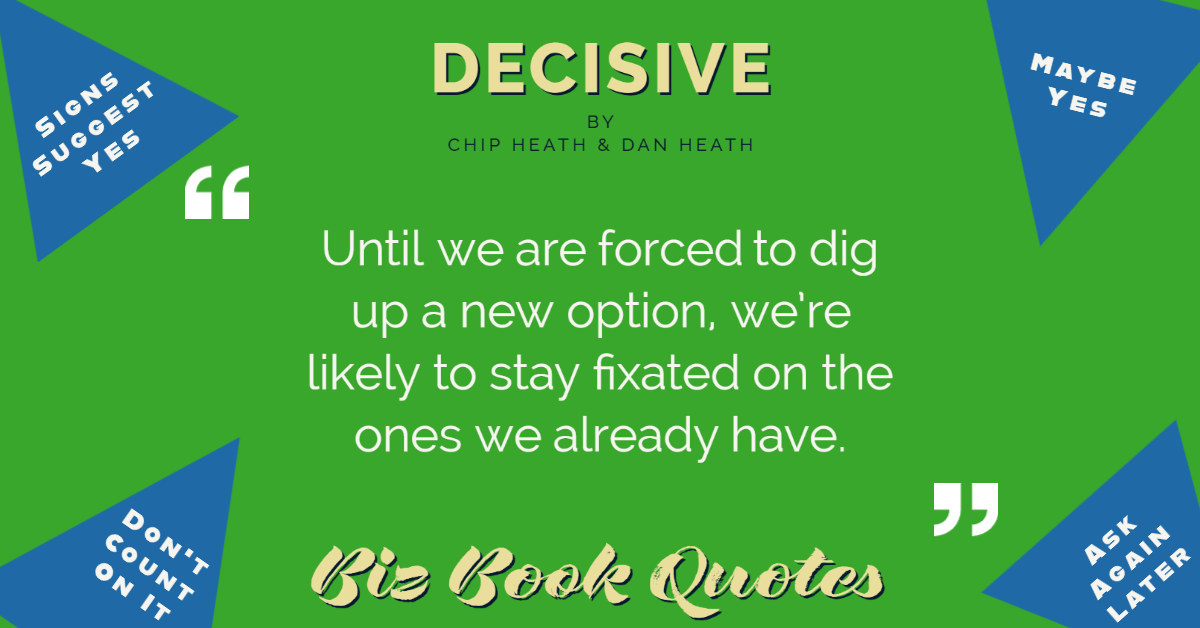 |
Until we are forced to dig up a new option, we’re likely to stay fixated on the ones we already have.
|
48 |
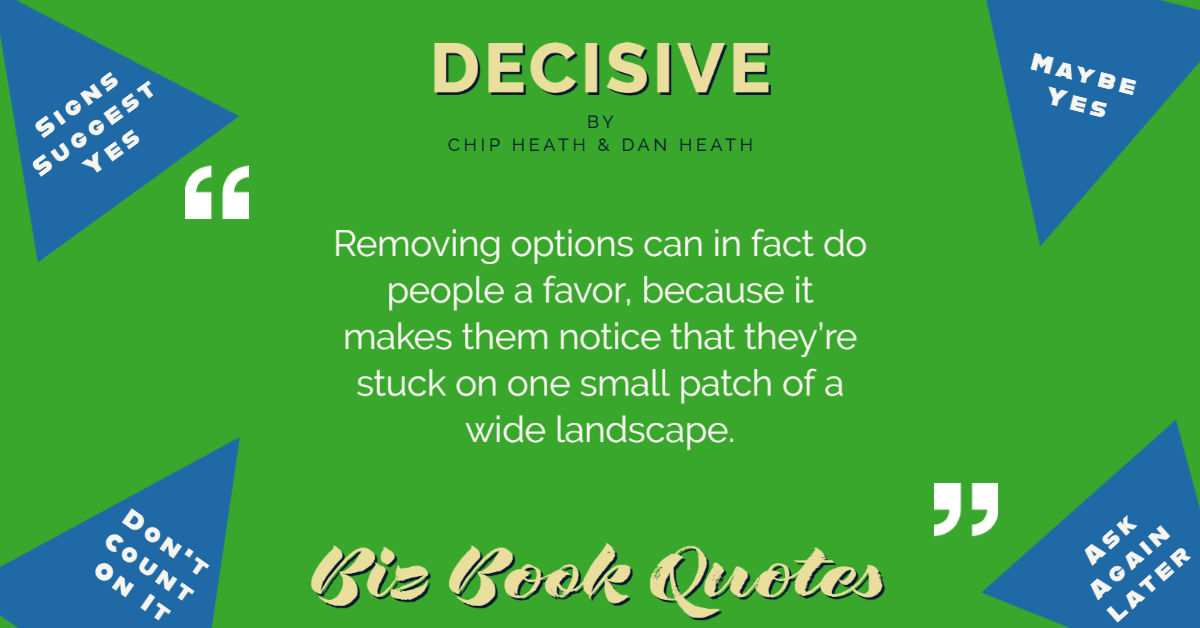 |
Removing options can in fact do people a favor, because it makes them notice that they’re stuck on one small patch of a wide landscape.
|
48 |
 |
Thinking ‘AND not OR’ turns out to be good corporate strategy.
|
62 |
 |
If people on your team disagree about the options, you have real options.
|
67 |
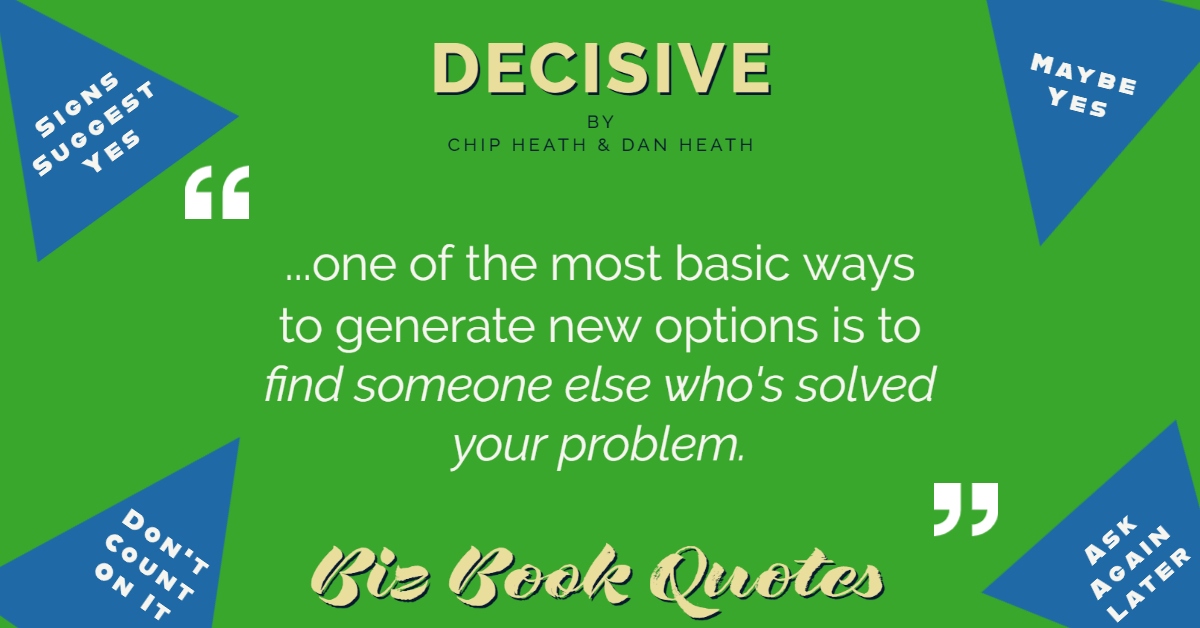 |
…one of the most basic ways to generate new options is to find someone else who’s solved your problem.
|
69 |